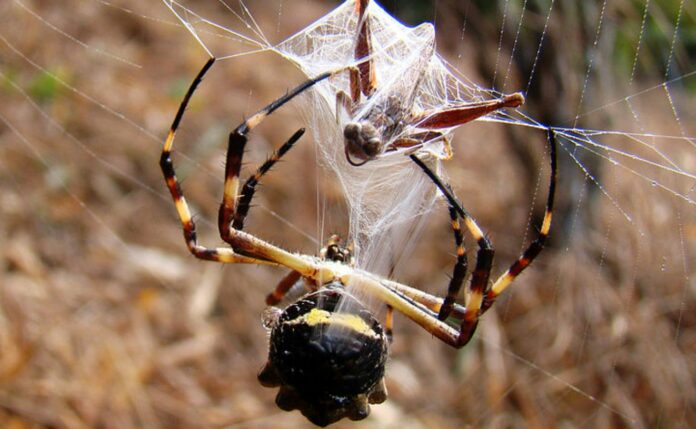Scientists discover that the glue qualities of orb weavers develop more quickly than their glue genes.
Orb weaver spiders from various habitats have genes that are quite similar, but because of uneven gene expression, their glue proteins and glue characteristics vary significantly.
If a spider can’t make good silk, it can’t eat. Spiders need the silk they make to make their webs, which is important to their survival. However, spiders live in many different places, which means their webs need to be adjusted for local success. Scientists looked at the glue that makes the webs of orb weaver spiders stick to find out how the properties of the glue change in different situations.
As a co-corresponding author of the work that was published in Frontiers in Ecology and Evolution, Dr. Nadia Ayoub of Washington and Lee University noted, “Discovering the sticky protein components of biological glues opens the doors to determining how material properties evolve.
“Spider silk fibers and glues represent a fantastic model for answering such questions since they are primarily made of proteins and proteins are encoded by genes.”
“Spider silks and glues have huge biomimetic potential,” said co-corresponding author Dr. Brent Opell of Virginia Tech.
Spiders produce glues with remarkable qualities that have uses in business, science, and other fields.
Got caught in spider webs
Each thread in an orb weaver spider’s web helps it to catch food. A rigid structure in the web cushions the impact of prey, which are then held in place by sticky threads until the spider can deal with them. Aqueous glue produced by aggregate glands makes these lines sticky. The glue must be tuned to provide the optimum stickiness outcomes for the local humidity since it absorbs water from the air. Yet, since orb weaver spiders come in a variety of species and inhabit a variety of habitats, their adhesive must be able to withstand a range of humidity.
Ayoub and her coworkers focused on two specific species, Argiope argentata, which lives in dry habitats, and Argiope trifasciata, which lives in humid conditions, in order to comprehend how spider glue stickiness adjusts. In addition to having A. argentata spiders construct webs in the lab, the researchers also collected webs from A. trifasciata in the field. The researchers gave the spiders a diet similar to their typical food in order to make sure that these webs were analogous to webs in the wild. They also compared glue droplet volume to wild controls in order to make sure that the humidity in the lab wasn’t influencing the droplets’ qualities. They next looked at the glue’s proteins and the make-up of the droplets.
A sticky situation
The researchers observed that when relative humidity rose, the droplets produced by A. argentata spiders were smaller and absorbed less water. Moreover, they absorbed less water from the environment and had protein cores that were smaller and took up less of the droplet’s space. The stiffness of the protein core of the droplets determines the toughness of glue droplets for both species of spiders, and the protein core toughness of A. argentata decreased as the humidity increased. Most of the time, the glue droplets on A. argentata threads were smaller and more densely packed than those on other species.
To comprehend how these variations in material qualities result from the proteins, the researchers also examined the proteins present in the glue droplets. A. argentata glue had the protein byproducts of four genes that weren’t present in A. trifasciata glue, despite the fact that the proteins they discovered were comparable but occurred in different ratios. The enhanced toughness of this glue and its reduced potential for water absorption may be explained by these more proteins and a more balanced ratio of AgSp1 and AgSp2 proteins.
“Despite the dramatic differences in material properties, the two species share most of their protein components,” added Opell. “The sequences of these proteins are also similar between species, but the relative abundance of individual proteins differs. Modifying the ratios of proteins is likely a rapid mechanism to adjust material properties of biological glues.”
Limitations of this study should be noted as it focused solely on two species, as Ayoub cautioned. Therefore, the proposed connections between proteins and material properties are restricted. Nevertheless, ongoing efforts are being made to document protein components and material properties of a wider range of species, which will enhance the ability to detect the underlying mechanisms of how proteins contribute to material properties, according to the authors.
Source: 10.3389/fevo.2023.1099481
Image Credit: unsplash
